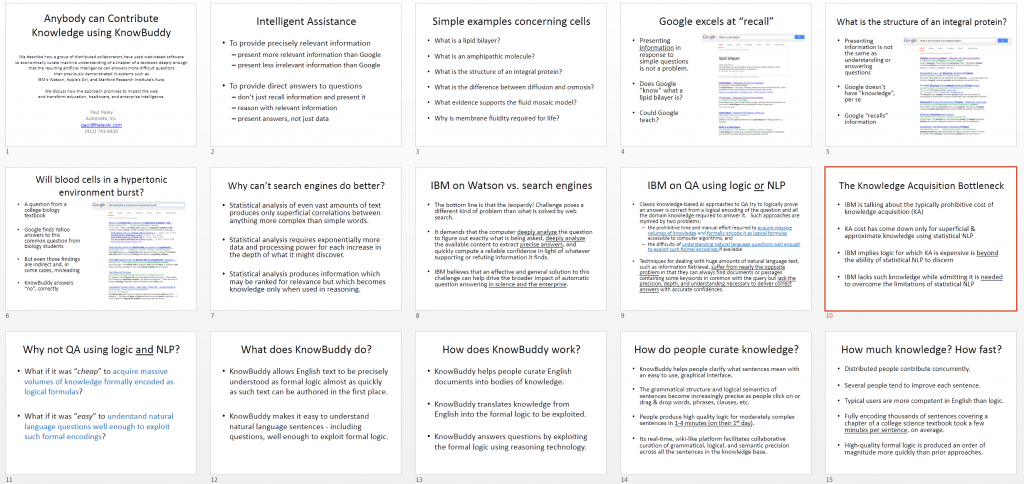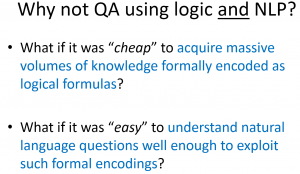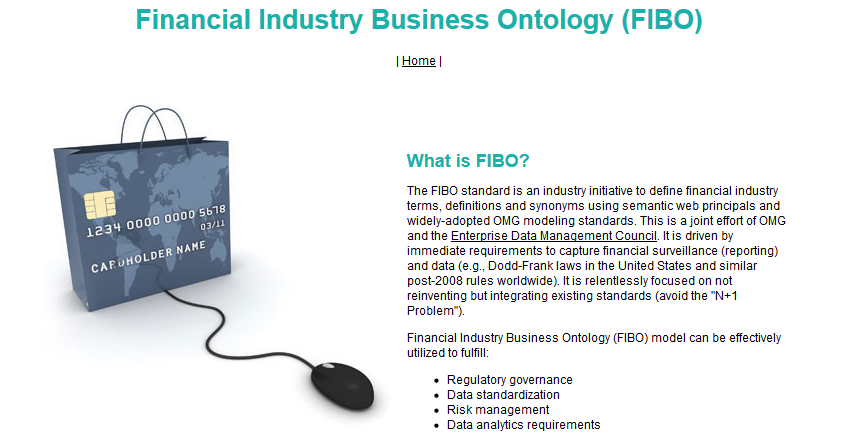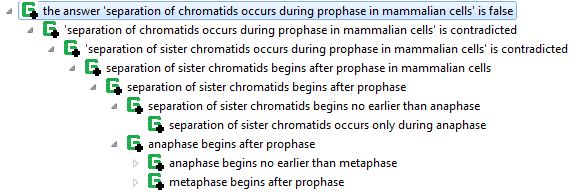Recently, John Sowa has commented on LinkedIn or in correspondence with some of us at Coherent Knowledge Systems on the old adage due to Shanks concerning the Neats. vs. the Scruffies. The Neats want nice formal logics as the basis of artificial intelligence. This includes anyone who prefers classical logic (e.g., Common Logic, RIF-BLD, or SBVR) or standard ontologies (e.g., OWL-DL) for representing knowledge and reasoning with it. The Scruffies may use well-defined technology, but are not constrained by it. They’ll do whatever they think works, now, whether or not it is a good long term solution and despite its shortcomings, as long as it can obtain immediate objectives.
Watson is scruffy. It doesn’t try to understand or formally represent knowledge. It combines a lot of effective technologies into an evidentiary framework that allows it to effectively “guess”.
Today, in response to continued discussion in the Natural Language Processing group on LinkedIn under the topic “This is Watson”, I’m posting the following presentation on Project Sherlock and the Linguist vs. Google and IBM.
Essentially, the neat approach is more viable today than ever. So, chalk one up for the neats, including Dr. Sowa and Menno Mofait’s comment in that discussion.
During a presentation at CMU after winning the game show,, IBM admitted that in order to get the last leg of improvement needed to win Jeopardy!, they needed to do some “neat” ontological knowledge acquisition, too!





